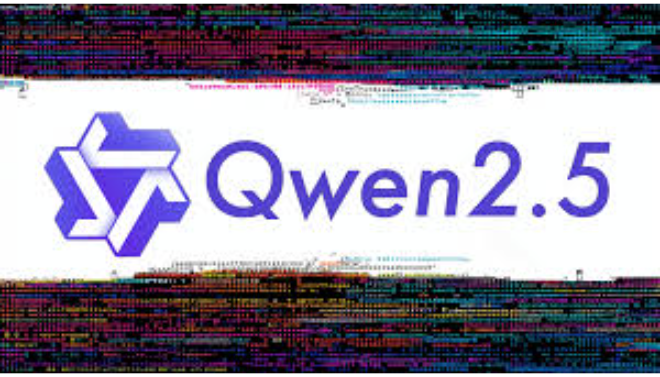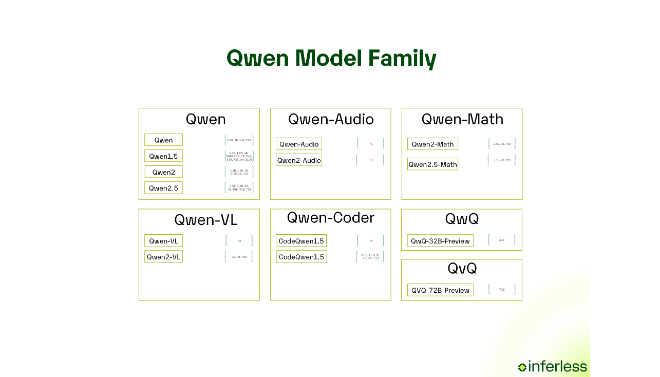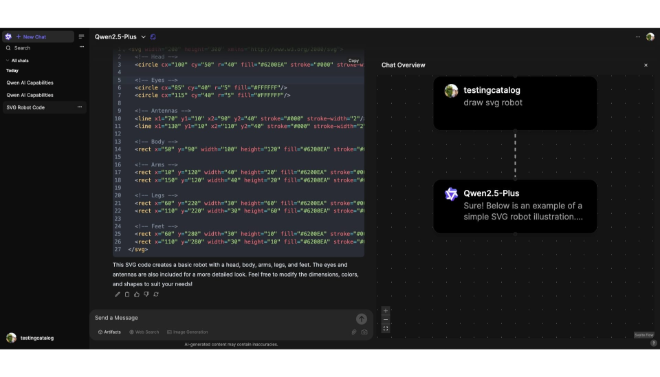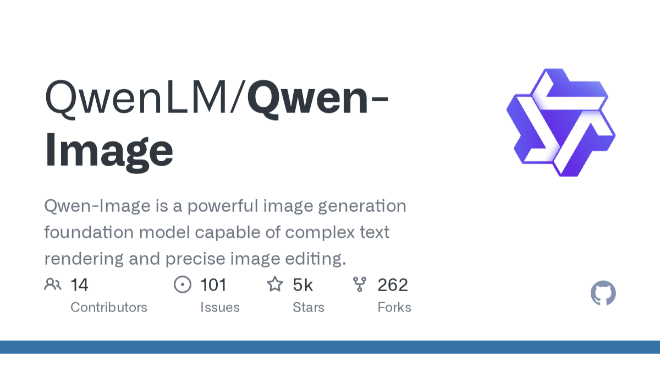The Qwen, which was created by Alibaba Cloud, is a compelling breakthrough in the world of large language models, delivering a highly powerful and flexible package of models to developers and companies.
Introduction
A novel generation of large language models (LLMs) is also finding its way into the competitive artificial intelligence world, which is not only good at text but can also comprehend and process other data. An example of this change is Qwen, which is the family of robust foundation models created by Alibaba Cloud. The models are intended to be very versatile, which means that they can be used to support a wide variety of tasks, such as understanding natural language or generating content using multiple modalities.
Qwen is designed as a successive series of models, ranging in size and performance, Qwen-1.8B parameter light models to the heavier ones, which makes it affordable to a range of applications and computation expenses. It has a performance-oriented architecture with a wide context-window enabling it to perform and generate long-form documents with a very high level of coherence. This is what really makes Qwen unique, as it is dedicated to open-source and commercial products, democratizing the access to powerful AI and offering business-level solutions to businesses.
In simple terms, you are a researcher who is exploring the limits of AI, a developer who wants to create a new application, or a business, which considers adopting intelligent capabilities, Qwen offers a powerful and trustworthy platform to bring your ideas to fruition.
Multimodal
Open-source
AI-Powered
Developer-friendly
Review
The Qwen, which was created by Alibaba Cloud, is a compelling breakthrough in the world of large language models, delivering a highly powerful and flexible package of models to developers and companies. But not content to generate simple text, Qwen is made special with its powerful multimodal features, including vision and audio inputs that work with virtually flawless precision. The models that give rise to the open-source family, such as Qwen-7B, and proprietary ones, are continuously ranked high in numerous industry benchmarks proving that it is robust in terms of complex reasoning, code, and mathematical assignments.
In the case of developers and researchers, Qwen is a highly customizable and accessible set of tools, with models accessible on models such as Hugging Face. This open-source method encourages innovation and permits specific fine-tuning to applications. Pricing may be complicated, as it is a pay-as-you-go, token-based system, however, performance and the fact that it supports multiple languages, particularly the Chinese language, is an attractive value proposition. Qwen is not merely a language model, but a combined solution to the development of very advanced, intelligent applications that need to understand both language and the real world better.
Features
Multimodal Capabilities (Qwen-VL, Qwen-Audio)
Qwen model family also comes with specialised modes such as Qwen-VL (Vision Language) and Qwen-Audio that can do what text can do and understand visual and audio input to enable new tasks in media analysis and creation of content.
Open- Source Availability
The Qwen models can be freely used and fine-tuned and further extended by developers and researchers on platforms such as Hugging Face under the Apache 2.0 license.
Large Context Window
Qwen-7B, e.g., has a context length of 32K tokens, which allows it to process and reason about large documents, codebases or complex conversations without context loss.
Tool Use and Function Calling
The models have the ability to call functions and communicate with external tools, which enables the models to undertake complex functions by dividing them into simple, actionable steps.
Strong Multilingual Support
Qwen is highly competent in the Chinese language, but its mastering of English and more than a dozen other language means it is a very powerful tool to apply worldwide.
High Performance on Benchmarks
Qwen has been widely rated as high on a broad variety of academic and industrial benchmarks, such as knowledge, reasoning, coding and mathematics, which demonstrates its strength and precision.
Best Suited for
AI Developers and Researchers
Qwen is a great option because the open-source models and well-documented make it easier to build and experiment with powerful, state-of-the-art foundation models.
Data Scientists
Data professionals, in general, can use Qwen to perform advanced data analysis, summarization, and natural language processing tasks, particularly when using large datasets.
Businesses Training AI Applications
Companies can deploy the commercial models on Alibaba Cloud to drive any type of application, including intelligent customer service chatbots and internal knowledge management systems.
Multilingual and Global Teams
Qwen is a good product given that it has good performance in multiple languages and therefore it can be used by a team that requires processing and generating content in English and Chinese among other major languages.
Content Creators and Marketers
Qwen allows its users to generate articles, marketing copy, and scripts, and its multimodal nature can help generate descriptions of images and videos.
Vision and Audio-Centric Projects
The dedicated Qwen-VL and Qwen-Audio models are ideally adapted to those projects where it is necessary to have a profound knowledge of visual and auditory information, including image perception, video overview, or voice recognition interfaces.
Strengths
Excellence in a wide range of activities, confirmed by the leading positions on the industry scales.
It is non-linear and multimodal unlike most text-only models.
The availability of important models in open-source enhances an innovation that is community-driven.
Large context window to process complex and long-form data.
Weakness
The tool is mainly targeted at developers and needs technical expertise to utilize the API or refine models.
Its token-based pricing model may be too complicated and hard to estimate by new users.
Qwen: Step by Step Guide to getting started.
It is easy to get going with Qwen as a developer. Here are the steps to take to start taking advantage of its strong capabilities in your projects.
Step 1: Obtain an API Key
Create an account with Alibaba Cloud and enter the DashScope console. Register a new API key, and use it to authentic your requests to the Qwen models.
Step 2: Check the Library to be installed
The official Python SDK can be used, or the Hugging Face library of transformers. You can start by typing pip install transformers:
Step 3: Make an API Call
At this point, you have your API key and the library installed and can now make your first API call. Give a text prompt and the model will come up with a response. You could ask Qwen to write a brief poem regarding the future of AI as an example.
Step 4: Experiment with Multimodality
When you are working with a multimodal model such as Qwen-VL, you can send image URLs or local image files with your text prompt. The model will interpret the image and answer on the visual perception.
Step 5: Test and Optimize
Survey the different models that the Qwen family has to offer and locate the one that fits your needs the most. There are also options to optimize the open-source models to your custom data sets and get the performance of particular, niche tasks.
Frequently Asked Questions
Q: What is Qwen?
A: Qwen is a family of massive language models, which is built by Alibaba Cloud. It has both open-source and proprietary models which are very effective in text, vision and audio tasks.
Q: Is Qwen free to use?
A:Yes, the open-source versions of Qwen are free to use, but you will have to pay to use the computational resources to run them. The business editions can be found in Alibaba Cloud at a pay-as-you-go model price.
Q: How is the main application of Qwen?
A: Qwen is mostly applicable to developers and researchers when creating AI applications, analyzing data, and adding intelligent features to business operations, particularly the ones that demand a combination of text, visual, and audio.
Pricing
Qwen operates using flexible and pay-as-you-go pricing model in which the cost is based on the number of tokens used. This model suits best to developers and businesses who will need to expand their usage up or down without a long-term contract.
Pay-as-you-go Model
The users pay on a per-1,000 token input and output basis. The cost is different according to the type of model employed (i.e. Qwen-7B vs. Qwen-1.8B).
Dedicated Instances
Dedicated instances are available when the enterprise wants to use a large number of instances to provide guaranteed performance and a more predictable cost structure.
Open-Source
The open-source versions of Qwen models can be used without charges on platforms such as Hugging Face, and you will have expenses related to the computational resources to run it on your own infrastructure.
Alternatives
GPT-3.5 and GPT-4
GPT-3.5 and GPT-4 are both models created by OpenAI with a reputation of being vastly scaled and versatile. GPT-4 is a top multimodal model, which is a powerful substitute to both text and vision.
Llama 3
The newest open-source model by Meta is Llama 3, which provides superior performance and has a large context window,making it a strong challenger of Qwen in an open-source market.
Mistral AI
A very powerful and efficient open-source model, Mistral can be an interesting option that developers should consider when requiring high performance and a smaller model size.
Share it on social media:
Questions and answers of the customers
There are no questions yet. Be the first to ask a question about this product.












Leave feedback about this